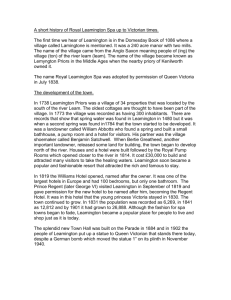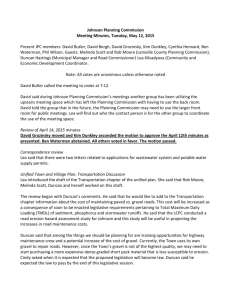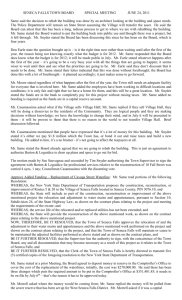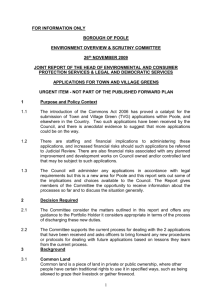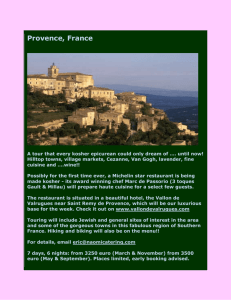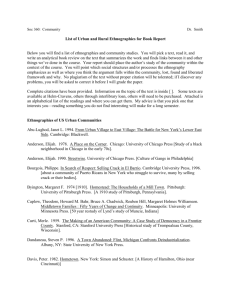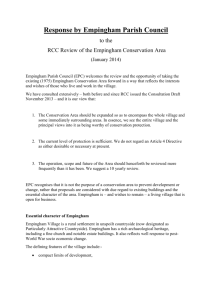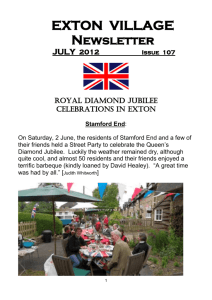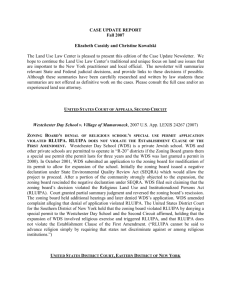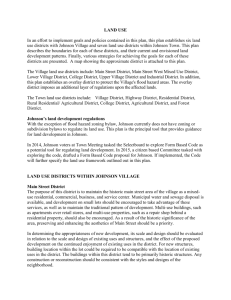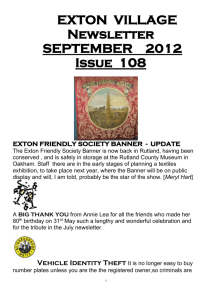ELG October 2015 meeting
advertisement
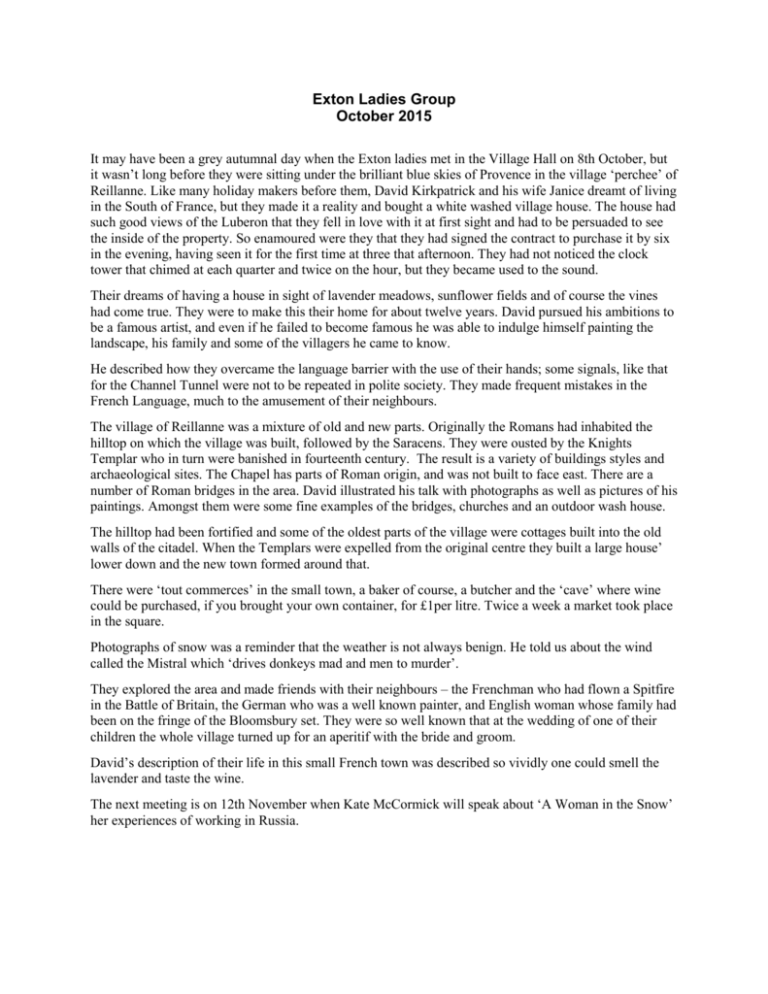
Exton Ladies Group October 2015 It may have been a grey autumnal day when the Exton ladies met in the Village Hall on 8th October, but it wasn’t long before they were sitting under the brilliant blue skies of Provence in the village ‘perchee’ of Reillanne. Like many holiday makers before them, David Kirkpatrick and his wife Janice dreamt of living in the South of France, but they made it a reality and bought a white washed village house. The house had such good views of the Luberon that they fell in love with it at first sight and had to be persuaded to see the inside of the property. So enamoured were they that they had signed the contract to purchase it by six in the evening, having seen it for the first time at three that afternoon. They had not noticed the clock tower that chimed at each quarter and twice on the hour, but they became used to the sound. Their dreams of having a house in sight of lavender meadows, sunflower fields and of course the vines had come true. They were to make this their home for about twelve years. David pursued his ambitions to be a famous artist, and even if he failed to become famous he was able to indulge himself painting the landscape, his family and some of the villagers he came to know. He described how they overcame the language barrier with the use of their hands; some signals, like that for the Channel Tunnel were not to be repeated in polite society. They made frequent mistakes in the French Language, much to the amusement of their neighbours. The village of Reillanne was a mixture of old and new parts. Originally the Romans had inhabited the hilltop on which the village was built, followed by the Saracens. They were ousted by the Knights Templar who in turn were banished in fourteenth century. The result is a variety of buildings styles and archaeological sites. The Chapel has parts of Roman origin, and was not built to face east. There are a number of Roman bridges in the area. David illustrated his talk with photographs as well as pictures of his paintings. Amongst them were some fine examples of the bridges, churches and an outdoor wash house. The hilltop had been fortified and some of the oldest parts of the village were cottages built into the old walls of the citadel. When the Templars were expelled from the original centre they built a large house’ lower down and the new town formed around that. There were ‘tout commerces’ in the small town, a baker of course, a butcher and the ‘cave’ where wine could be purchased, if you brought your own container, for £1per litre. Twice a week a market took place in the square. Photographs of snow was a reminder that the weather is not always benign. He told us about the wind called the Mistral which ‘drives donkeys mad and men to murder’. They explored the area and made friends with their neighbours – the Frenchman who had flown a Spitfire in the Battle of Britain, the German who was a well known painter, and English woman whose family had been on the fringe of the Bloomsbury set. They were so well known that at the wedding of one of their children the whole village turned up for an aperitif with the bride and groom. David’s description of their life in this small French town was described so vividly one could smell the lavender and taste the wine. The next meeting is on 12th November when Kate McCormick will speak about ‘A Woman in the Snow’ her experiences of working in Russia.








